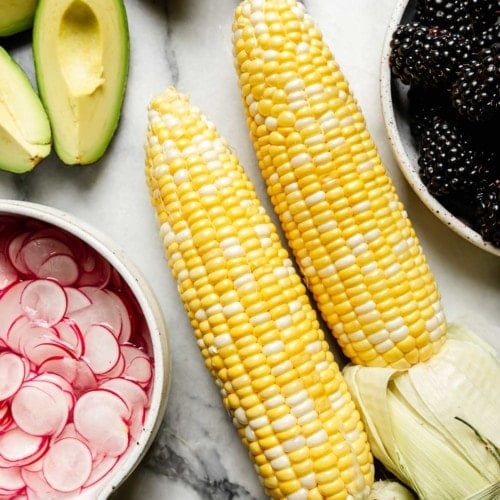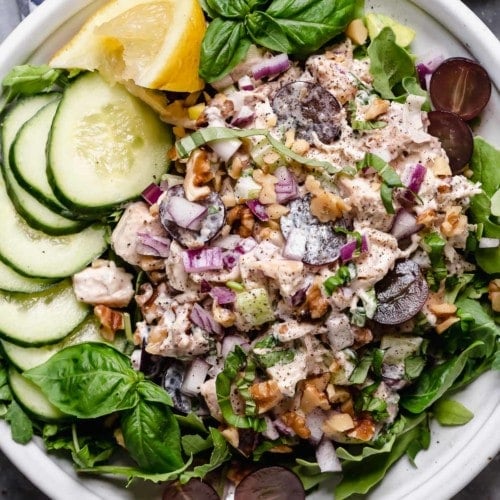Fiber is an important nutrient that your body doesn’t fully digest. That part – the “non-digestibility” – is key to fiber’s health benefits. Different types of fiber are naturally in a variety of plant-based foods and also added to some foods and drinks to help people get more. As a registered dietitian, I’ll walk you through how much fiber you should aim to get every day, why it’s important for your health, and how you can get more.

Your Daily Dietary Fiber Intake
Most Americans should aim to get 25-30 grams daily, according to the American Heart Association. Ideally, your fiber should come from a variety of foods. But most American adults get about half that much, averaging just about 15 grams per day.
The Dietary Guidelines for Americans has put forth similar fiber recommendations for different age groups, as follows:
| Age | Grams of fiber recommended/day |
|---|---|
| Children age 5-18 | 14-33 grams (or add 10-15 to the child’s age; for example, a 5-year-old would need 10-15 grams fiber/day) |
| Women under age 50 | 25-28 grams |
| Women over age 50 | 22 grams |
| Men under age 50 | 31-34 grams |
| Men over age 50 | 28 grams |
Another way to look at it is to aim for 14 grams of fiber per every 1,000 calories you consume each day. For example, someone who eats a roughly 2,000-calorie diet should aim for about 28 grams of fiber daily.
Our bodies can handle even higher amounts of fiber, and that typically brings more benefits. But it is possible to get too much. More than 70 grams of fiber per day is not advised, particularly when consumed over a short period of time. This amount of fiber may cause side effects such as bloating, gas, and cramping as your body works to digest the fiber.
Adding more high-fiber foods to your day can be delicious and enjoyable. Build meals and healthy snacks around all types of vegetables, fruits like berries and apples, and legumes like chickpeas, black beans, and lentils.
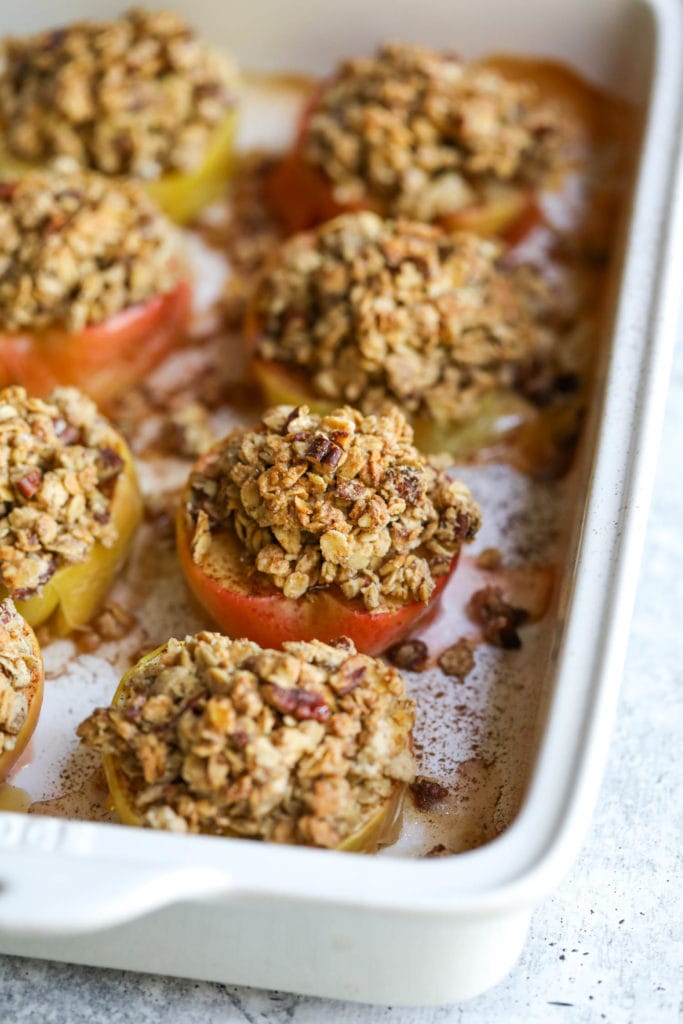
Why Fiber Matters
The two main types of fiber are insoluble and soluble fiber, and you need them both to help your body run efficiently. But you don’t need to worry about getting certain amounts of each type of fiber. In fact, most plant foods naturally contain a few different kinds of soluble and insoluble fiber.
Rather, aim for getting a minimum of 25 grams of daily fiber, which will give you many health benefits, including:
- Consistent and better digestion, including less constipation
- Boosting prebiotics and probiotics to build beneficial gut bacteria and a healthy gut microbiome for disease-fighting immunity and reduced risk of sickness
- Lowered blood pressure and regulated blood sugars (glucose levels)
- Reduced cholesterol levels and triglycerides
- Feeling satisfied from meals, which can contribute to weight loss, less abdominal fat, and weight management
- Lowered risk of heart disease, type 2 diabetes, and some cancers, including a lower risk of colorectal cancer
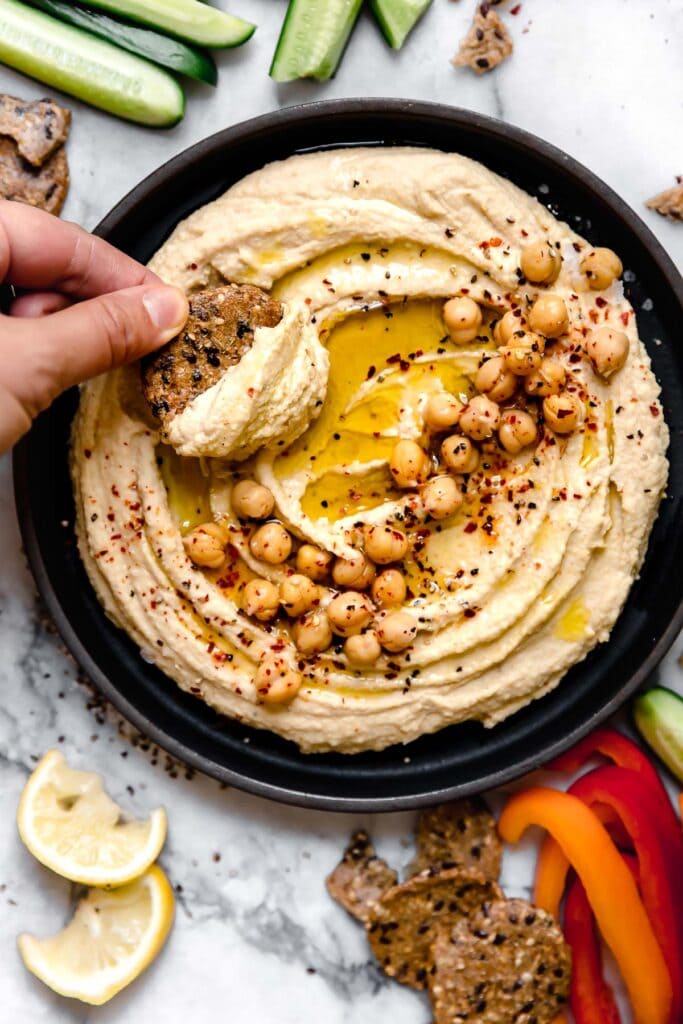
Next Steps
Here are our dietitians’ 10 tips to help increase your fiber intake and make sure you’re getting enough. And there’s more to love: Increasing your fiber intake helps you “step up” your overall nutritional intake and healthy diet since fiber is naturally in so many good-for-you foods.
- Try a high-fiber meal plan. To increase your fiber naturally, follow our two-week high fiber, high protein meals plan, which includes done-for-you grocery lists and dinner recipes. These also provide plenty of leftovers for easy lunches.
- Snack on hummus, which is made from a base of chickpeas. And, to get even more fiber, use veggies or whole-grain crackers as your dippers. There are many good brands of hummus to buy, and it’s also easy to make your own from just five ingredients. You can also use it as a base for a layered Greek dip or a spiced Mediterranean-style dip.
- Build meals around vegetables, such as making leafy greens the base of a dinner bowl, adding roasted veggies to meals, or boosting egg dishes, soups, and casseroles with more veggies.
- Eat whole fruits instead of fruit juice. When you drink fruit juice, you get some of the vitamin and antioxidant benefits of fruits, but you’re missing out on the fiber. By eating whole fruits, like berries, citrus, and apples with the peels still on, you’re getting a natural source of a variety of insoluble and soluble fibers.
- Add more beans and legumes to your meals and snacks. They’re great for stirring into salads (like this popular Jennifer Aniston Salad, Harvest Lentil Salad, or our Greek Cucumber Salad) as well as adding to meals and soups, like our famous Beef And Bean Chili and 5-star Sheet Pan Veggie Shawarma. We also love these roasted edamame snacks, which provide 4 grams of fiber per pack.
- Start the day with oatmeal, which contains a type of soluble fiber called beta-glucans connected to lower cholesterol, blood pressure, and blood sugar levels. Avoid making oatmeal less healthy by choosing nutritious toppers.
- Choose better cereal with at least 3-5 grams of fiber per serving for the mornings when you need a super fast breakfast. We like the Seven Sundays oat protein cereals (use REALFOOD30 for 30% off) and Struesli, a grain-free granola with no added sugars or sweeteners (use RFD20 for 20% off).
- Opt for whole grains, such as quinoa and brown rice, and whole-grain or whole-wheat versions of bread, pasta, rice, crackers, and cereals
- If you eat a grain-free diet, build your meals and snacks around foods like beans, vegetables, fruits, nuts, and seeds. And check out our tips for increasing fiber if you’re also avoiding grains.
- Consider a fiber supplement. Though it’s best to get the majority of your fiber from natural food sources of dietary fiber (aka, more plant-based foods), some people still don’t get enough. If that’s the case, consider adding a fiber supplement daily or a few times a week.
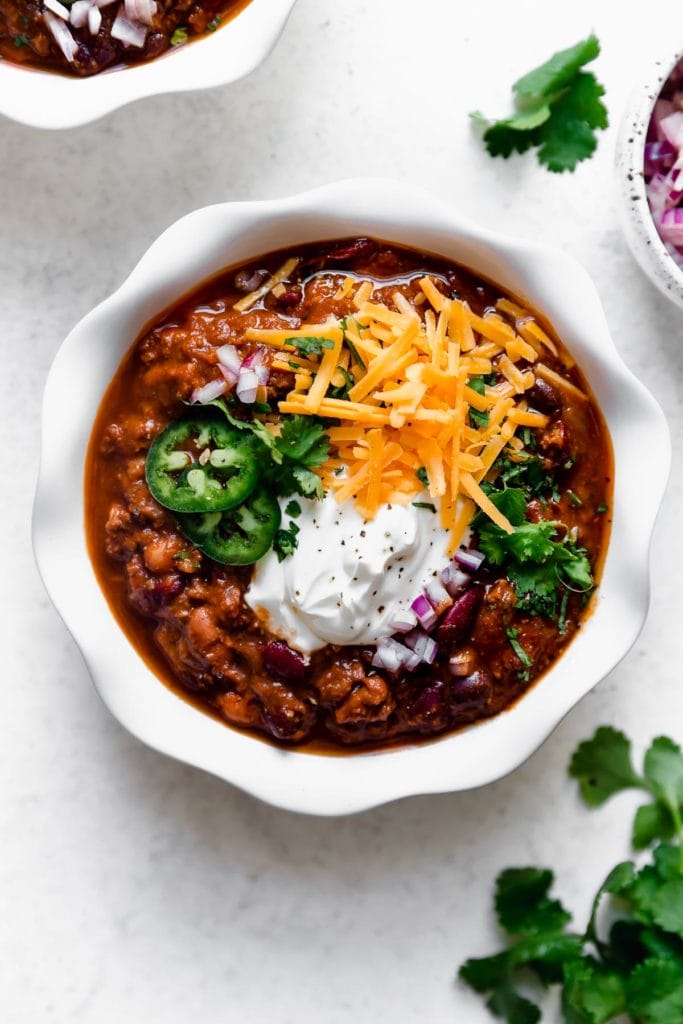
Sample High-Fiber Daily Meal Plan
Here’s an example of a realistic daily menu that provides plenty of fiber.
Breakfast = 8 grams fiber
- 1 cup oatmeal (4 g)
- 1 tablespoon peanut butter (1 g)
- ⅓ cup raspberries (3 g)
Lunch = 12 grams fiber
- 1 ⅓ cups bean chili (10 g)
- ¼ cup diced avocado (2 g)
Snack = 7 grams fiber
- 1 medium apple (5 g)
- 2 tablespoons peanut butter (2 g)
Dinner = 5 grams fiber
- 1 serving roasted veggies and chicken (5 g)
DAILY TOTAL = 32 grams of fiber
Also, contrary to popular belief, a high-fiber diet doesn’t necessarily have to be high in calories and carbohydrates. The above daily example is on the lower end for calories (about 1,400 calories total) and carbohydrates (about 135 grams of carbohydrate). Anywhere in the range of 100-150 carbs/day is considered low carb. Someone who is physically active should consume more calories, carbs, and fiber-rich foods than this example provides.
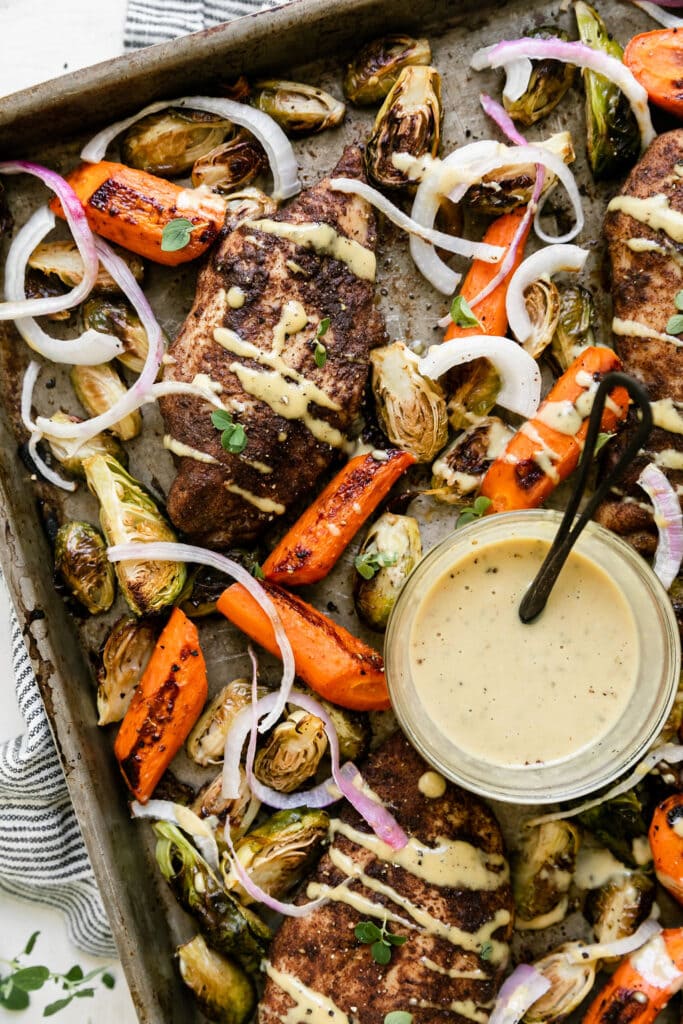
Frequently Asked Questions
The risks of not getting enough fiber are constipation, hemorrhoids, and obesity, as well as higher susceptibility to conditions like diverticulitis, irritable bowel syndrome (IBS), heart disease, type 2 diabetes, and bowel cancer.
Some signs of a low-fiber diet (not getting enough fiber) are bloating, constipation, frequent hunger, and weight gain.
A low-fiber diet is 2-3 grams of fiber per meal or snack, or a total of 8-15 grams of fiber per day. A high-fiber diet is more than 30 grams per day.
One may need to follow a low-fiber diet if they suffer from bowel conditions, such as narrowing or inflammation of the intestines, including Crohn’s disease, ulcerative colitis, or bowel surgery.
Yes, insoluble fibers are especially beneficial for relieving and avoiding constipation. They act as a “bulking” agent, increasing the speed with which food and waste pass through your digestive tract. They also attract water to your stool, making bowel movements softer and easier to pass with less strain.
Some foods high in insoluble fibers are fruits (especially apples, pears, strawberries, and peaches), nuts, seeds (especially flaxseed and chia seeds), whole grains (like rye, wheat bran, and brown rice), root vegetables (like carrots and sweet potatoes), tomatoes, green beans, and peas.
For ultimate success, we highly recommend reading the tips in the full blog post above. All photos and content are copyright-protected. Please do not use our photos without prior written permission. Thank you!
